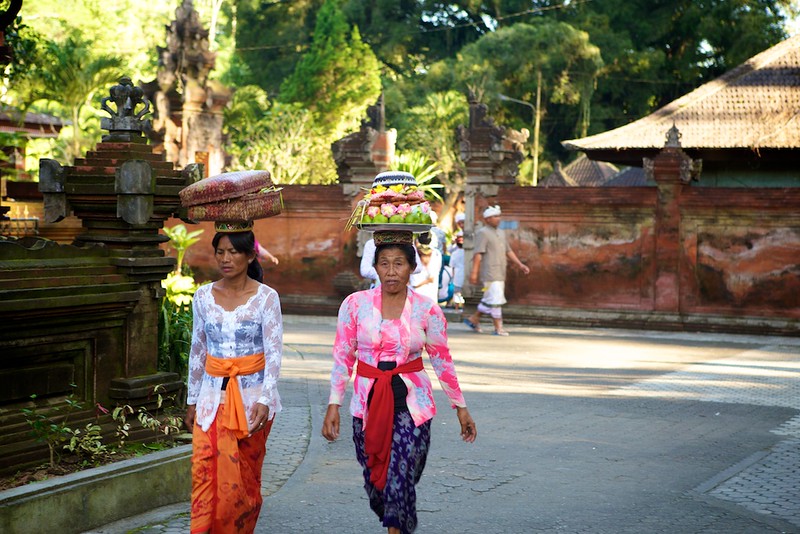Transforming Lives Through Healthy Cities in Indonesia
 Just like many countries in Southeast Asia, Indonesia experiences rapid urban growth as people move to cities in search of better opportunities. Urgent steps must be taken to improve urban health in Indonesia — with 58% of Indonesia’s population living in urban areas, health problems have become increasingly prevalent among urban populations due to poor urban planning and inadequate access to health services.
Just like many countries in Southeast Asia, Indonesia experiences rapid urban growth as people move to cities in search of better opportunities. Urgent steps must be taken to improve urban health in Indonesia — with 58% of Indonesia’s population living in urban areas, health problems have become increasingly prevalent among urban populations due to poor urban planning and inadequate access to health services.
The Problem of Urban Health
In the 21st century, urbanization has become a key factor affecting global health. The increasing number of people living in cities has resulted in problems like inadequate housing and poor sanitation that all have a detrimental impact on the health of urban dwellers. While urbanization opens opportunities for employment and socio-economic development, the health burden of infectious diseases, non-communicable diseases and violence and injuries are especially apparent in cities due to rapid urbanization and poor urban planning.
The Healthy Cities Initiative
To combat the health problems caused by urbanization, the World Health Organization proposed the Healthy Cities initiative in 1986, aiming to make healthy living a priority in cities by helping put forward developmental changes. In Indonesia, the Healthy Cities project launched in 1998 and has been ongoing for over two decades, promoting the importance of health within urban areas. The program aims to improve urban health in Indonesia by developing better urban planning to create a cleaner living environment, as well as increasing citizens’ access to health services and facilities.
A Healthy City in Indonesia is defined as “a clean, comfortable, safe and healthy city (or regency), which is manifested in multiple settings through integrated activities agreed upon by the community and local government.”
There are nine pillars in Indonesia’s Healthy Cities initiative:
- Self-sufficient and healthy people
- Offices and industrial places
- Transportation and road safety
- Residential and religious places
- Marketplaces
- Social protection
- Educational/schooling practices
- Tourism places
- Disaster prevention and management
Semarang: The Healthy City
Semarang, the capital and largest city of Central Java province has slowly but surely been transformed into a Healthy City. Facing the burden of a high incidence of dengue hemorrhagic fever (DHF) in 2010, Semarang’s health officials recognized the need to improve urban health and started implementing the Healthy Cities initiative by establishing a Healthy City Forum. Community participation became a focus of the forum, organizing local community meetings that would contribute to the city development planning process.
Community members also collaborated with the forum on developmental works. This was demonstrated in the Thematic Kampung program, where Kampung residents worked with the city government to decide what interventions should be made to address health issues — this program helped upgrade public infrastructure and facilities in 250 neighborhoods between 2016 and 2021. By involving local communities, Semarang’s efforts to become a Healthy City have been highly successful, not only resulting in a lower incidence of DHF but also creating a cleaner environment where tourism and the local economy have thrived.
Health Equity Through Urban Governance
JSI’s Building Healthy Cities (BHC) initiative, running from 2017 to 2022 in Indore, India; Makassar, Indonesia; Kathmandu, Nepal; and Da Nang, Vietnam, aimed to tackle the root of the problem of urban health: through the lens of healthy equity. Funded by USAID, the BHC project worked to harmonize decision-making about health across the sectors of transport, environment, sanitation, education, recreation and technology, all of which are factors that can affect the health of an urban population. This is a systemic approach that builds links between citizens and governments, encouraging policy and decision-making to be informed by the voices of the people.
A core value of the BHC is citizen empowerment — healthy urban planning should involve the whole population of the city, including those most heavily affected by health inequalities. By fostering meaningful citizen participation and engaging with communities, city governments are working toward the sustainable transformation of urban areas.
To improve urban health in Indonesia, BHC focused its efforts on the city of Makassar to create a multi-sector integrated data system. This incorporates yet another core value of the BHC: data for decision-making. A well-integrated data system not only supports good urban planning but also allows for effective responses to public health issues through data monitoring. In Makassar, BHC trained 10 city sectors and staff at all community health centers on stakeholder engagement, data aggregation and preparation, and capacity building for government departments. Sharing and integrating data improves data quality, allowing for more informed decision-making on health policies to improve the quality of life in Makassar.
The Importance of Healthy Cities
In aiming to build healthier cities, strides have been made to improve urban health in Indonesia. The successes of both the WHO’s Healthy Cities initiative and the USAID-funded BHC project have demonstrated the importance of citizen participation in improving public health and creating a more sustainable urban environment. By continuing to make health equity a core principle in Healthy Cities, Indonesia will continue to improve the quality of life of the poor and vulnerable.
– Stephanie Chan
Photo: Flickr
